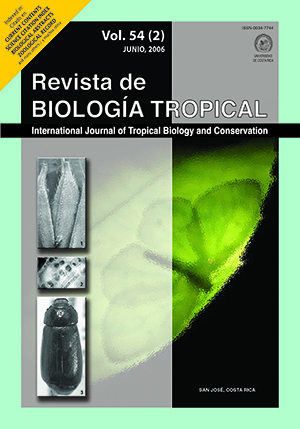Abstract
The spatial and temporal abundance of epiphytic dinoflagellates associated with ciguatera was stud-ied over two annual cycles (March 1999 to March 2000 and March 2001 to March 2002) in the northwestern coast of Cuba. From 14 species of macroalgae (Phaeophyta, Chlorophyta, and Rhodophyta), 1340 samples were obtained identifying seven species as potentially noxious; five of them are new reports for Cuba’s phytoben-thos: Prorocentrum belizeanum Faust, P. concavum Fukuyo, P. mexicanum Tafall, Coolia monotis Meunier, and Ostreopsis lenticularis Fukuyo. ANOVA/MANOVA analysis showed significant spatial differences: lower cell abundance near the shoreline adjacent to a river inlet and higher cell abundance in the deepest area. Prorocentrum lima (Ehrenberg) Dodge 1975 was found mainly on Phaeophyta followed by Chlorophyta and Rhodophyta. Gambierdiscus toxicus was found mainly on Phaeophyta followed by Rhodophyta and Chlorophyta. All the spe-cies reported in the study area were mainly on Padina spp. (Phaeophyta). Acanthophora spicifera (Rhodophyta) did not host dinoflagellate species. Environmental conditions in summer (higher temperature, more nutrients, greater water transparency, and low wind intensity) are suitable for macroalgae development, which serves as a substrate for potentially harmful dinoflagellates, and possibly the main vector for spreading ciguatera along the coast of Cuba.
##plugins.facebook.comentarios##

This work is licensed under a Creative Commons Attribution 4.0 International License.
Copyright (c) 2006 Revista de Biología Tropical






